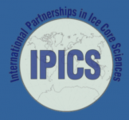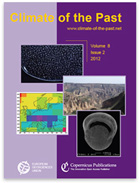- Home
- Science Introduction
- Endorsed and Affiliated Groups
- Ipics
- IPICS
IPICS - International Partnerships in Ice Core Sciences


Deep in the field at Aurora Basin. Image credit: Tony Fleming, AAD
Ice cores provide information about past climate and environmental conditions on timescales from decades to hundreds of millennia, as well as direct records of the composition of the atmosphere. As such, they are the cornerstones of global change research. For example, ice cores can play a central role in showing how closely climate and greenhouse gas concentrations were linked in the past, and in demonstrating that very abrupt climate switches can occur.
With the completion of major projects in Greenland and Antarctica over the last 15 years, the international ice coring community is planning for the next several decades. The costs and scope of future work create the need for coordinated international collaboration. Developing this international collaboration is the charge of IPICS, the International Partnerships in Ice Core Sciences, a planning group currently composed of ice core scientists, engineers, and drillers from 24 nations.
IPICS is supported by PAGES (Past Global Changes), SCAR (Scientific Committee on Antarctic Research) and IACS (International Association of Cryospheric Sciences), although it is not a formal project under any of these organizations.
Learn more and participate
For more information about IPICS please contact the co-chairs (2017-2021):
Tas van Ommen, Australian Antarctic Division, Australia
Hubertus Fischer, University of Bern, Switzerland
2021 news
The 3rd IPICS Open Science Conference (originally planned for 18-23 October 2020, and then rescheduled for 10-15 October 2021) in Crans-Montana, Switzerland, has been postponed until October 2022. Go to the PAGES' calendar entry for all details.
New and/or updated White Papers are now available.
Previous news
2019
The 8th International Ice Drill Symposium was held from 30 September to 3 October 2019 in Copenhagen, Denmark. Go to the PAGES' calendar entry for all details.
2018
The IPICS SC meeting was held (alongside the POLAR2018 conference) in Davos, Switzerland, on 17 June 2018.
A joint IPICS/beyond EPICA Oldest Ice workshop was also held in Davos on 18 June 2018.
2016
IPICS Second Open Science Meeting - 7 to 11 March 2016: The IPICS Second Open Science Conference was held in Hobart, Australia, from 7-11 March 2016. Abstracts were invited on all aspects of ice-core research including major recent drilling projects.
The Ice Core Young Scientists' (ICYS) also held a one-day workshop alongside the IPICS Open Science Conference on 6 March.
Access the Report from the 2nd International Partnerships in Ice Core Sciences Open Science Conference here.
Access the Oral Program here (pdf, 150KB).
Access the Abstracts here (pdf, 1.6MB).
Products
 Joint Climate of the Past/The Cryosphere special issue emerging from the IPICS Second Open Science Meeting.
Joint Climate of the Past/The Cryosphere special issue emerging from the IPICS Second Open Science Meeting.
This volume consists of work based on some of the papers presented at the Hobart meeting in 2016. They cover a range of topics related to all aspects of ice-core science, including recent drilling projects. Papers that help to define site characteristics, as well as those that link ice-core work to other aspects of paleoclimate, are included.
White papers / Scientific goals
Two international meetings in 2004 and 2005 lead to an ambitious four-element framework that both extends the ice core record in time and enhances spatial resolution.
The scientific goals and their implementation are outlined in a series of IPICS White Papers > view
Meetings
See the list of IPICS meetings since 2004 > view
Steering Committee
The IPICS Steering Committee is made up of 32 representatives from around the world > view
Resources
Important IPICS documents: Climate of the Past special issue, mission statements, science plans, workshop reports > view
IPICS related links > view
Popular IPICS related articles > view
Affiliated groups
Ice Core Young Scientists (ICYS) was conceived at IPICS' First Open Science Conference in 2012 and was developed by a small, passionate group of early-career scientists from Europe, Australia and the United States. It exists to foster personal relationships among young ice-core researchers from around the world.